Repairing the Washing Machine
Prelude
This post is about my broken washing machine: why it broke and how I repaired it. I wrote it to help out other people who find themselves in a similar situation (but also to brag1).
Through this experience I’ve learned a few things, one of which is that washing machines really are very simple and they haven’t changed much in a long time. There are no revolutionary new features in washing machines that you buy today and, aside from wear and tear, a new machine is no better than an old one, so you’re not gaining anything by buying a new one.
Part 1: Broken washing machine
Late in November last year, our washing machine stopped working. It popped the mains circuit breaker mid-cycle. Hoping that this was due to long-term overloading rather than in the short term, I gingerly flipped the breaker back on and tried to restart the machine. It did not turn on. It was completely dead. Luckily my mother lives within walking distance, so I was able to finish washing in her machine, but that was really the only fortuitous part at that point in time.
We live on the 5th floor in a building with no lift, so I figured that it might be easier to just fix the machine. In retrospect, that may have been an incorrect assessment. For the record, the machine is a 10 year old AEG2 washer & dryer combo.
Anyhow, I opened up the machine thinking that I might as well check for loose wires or obvious burn marks. What I found was that a couple of wires that were previously attached to a temperature sensor on the dryer had worked themselves loose and one of them had made a connection with the chassis. There was a scorch mark where this unfortunate event had taken place.
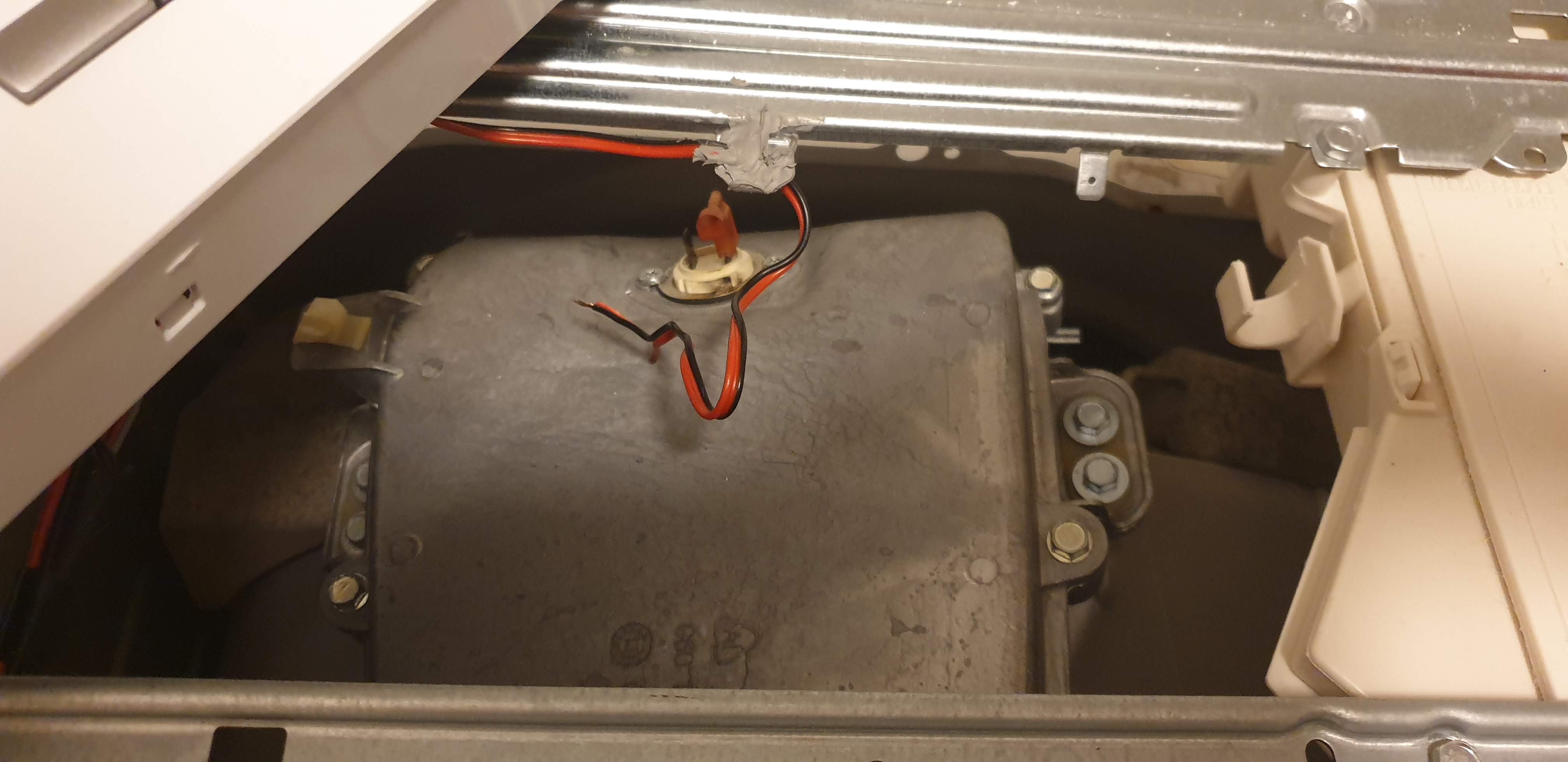
The washing machine had been previously repaired by a professional when the drier function stopped working. This happened almost exactly 4 years before the machine failed again. The repair was what failed. The crimping of the terminals was fine, but the terminals that they used were not suitable for high-vibration environments; at least not without any added strain relief. The wires were only held by the copper, so over time, when the copper work-hardened and became brittle, they eventually broke off as there was nothing else to secure them.
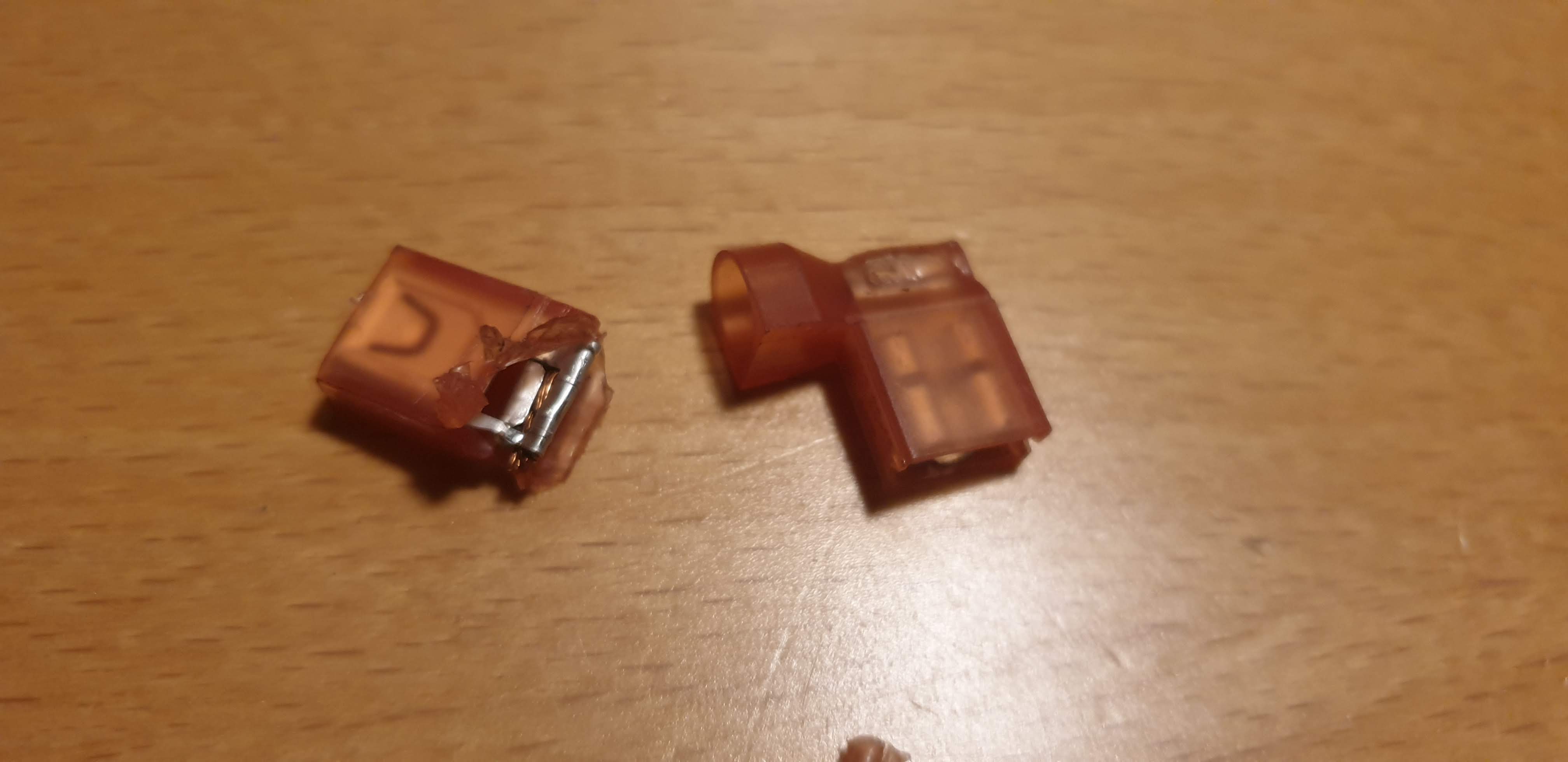
I cut open one of the terminals to show you how it’s only crimped around the metal. The correct way to do this repair would have been to use crimping terminals that also crimp over the jacket, or at least to put some heat shrink tubing over the terminals and the wire to reduce the mechanical load where metal meets metal, and to better hold onto the wire.
What confused me was that those wires should be on a low-voltage and low-current circuit. How could this do anything more than tripping the ground fault relay? Take a look at the following photographs. See if you can figure out the problem.
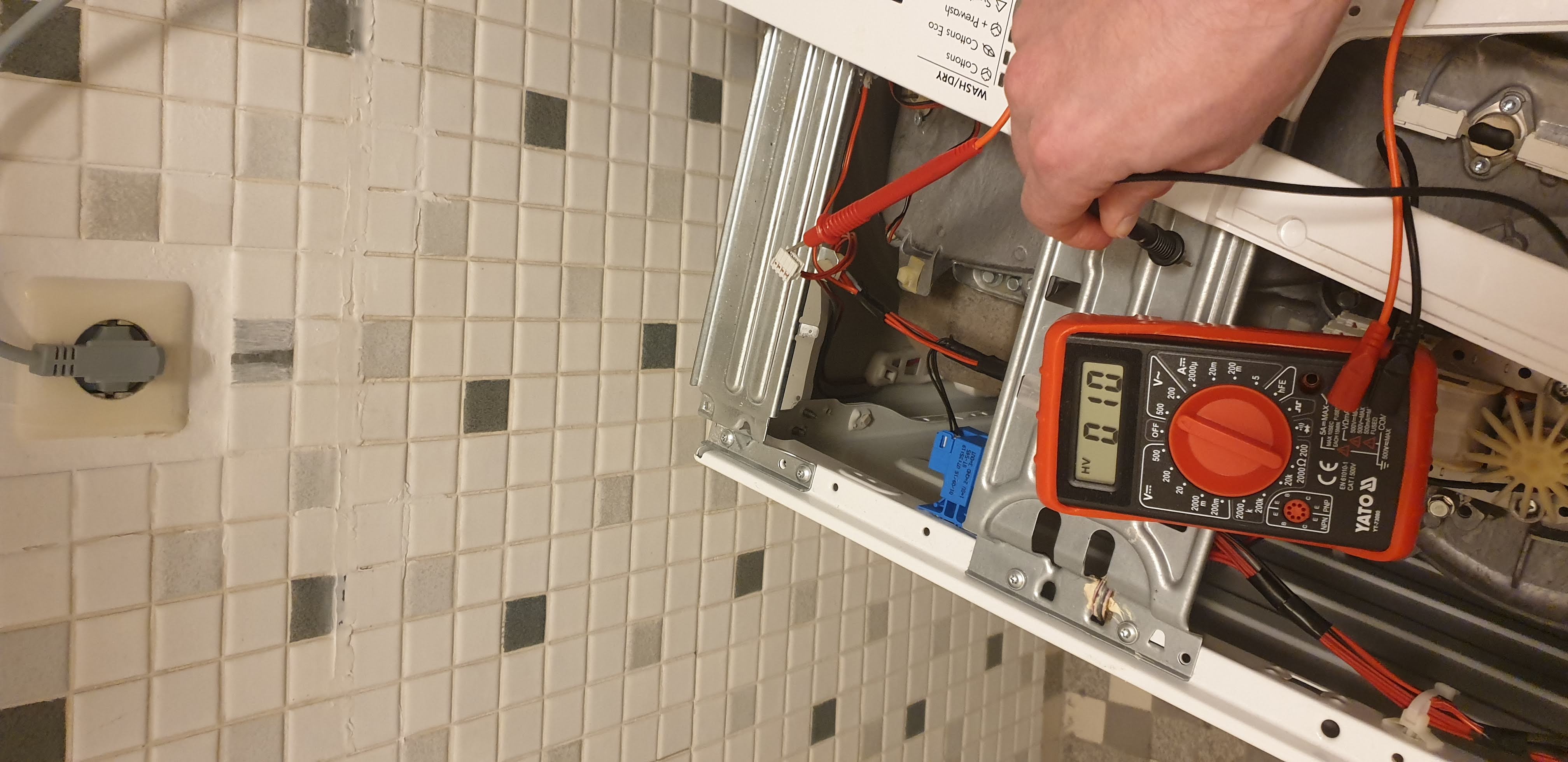 |
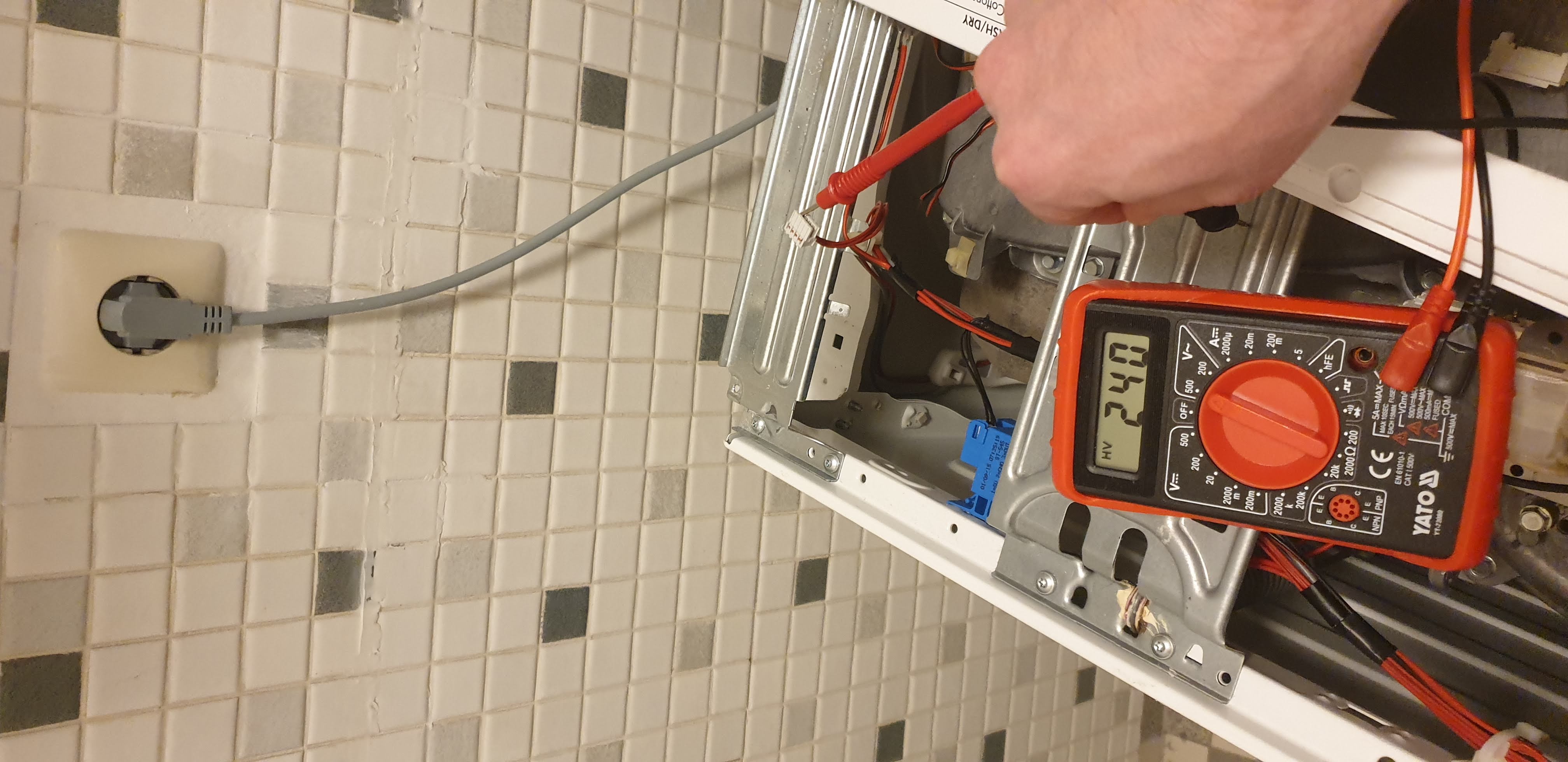 |
Do you see it? If not, take a look at the wall socket. Regardless, the problem is that the washing machine’s power supply isn’t isolated in any way from the mains voltage. The machine’s low-voltage circuit is directly coupled to the mains and depending on how the plug is inserted into the wall socket, you may get the supposed low-voltage ground coupled to either neutral or live3.
Sadly, this all meant that the main controller was definitely completely toasted4, so I removed it and took a look. This too had an obvious scorch mark close to where those dryer temperature sensor wires were connected. In fact, it was absolute carnage. Upon closer inspection, it became apparent that a short trace on the PCB had literally exploded. Look, here’s a couple of pictures.
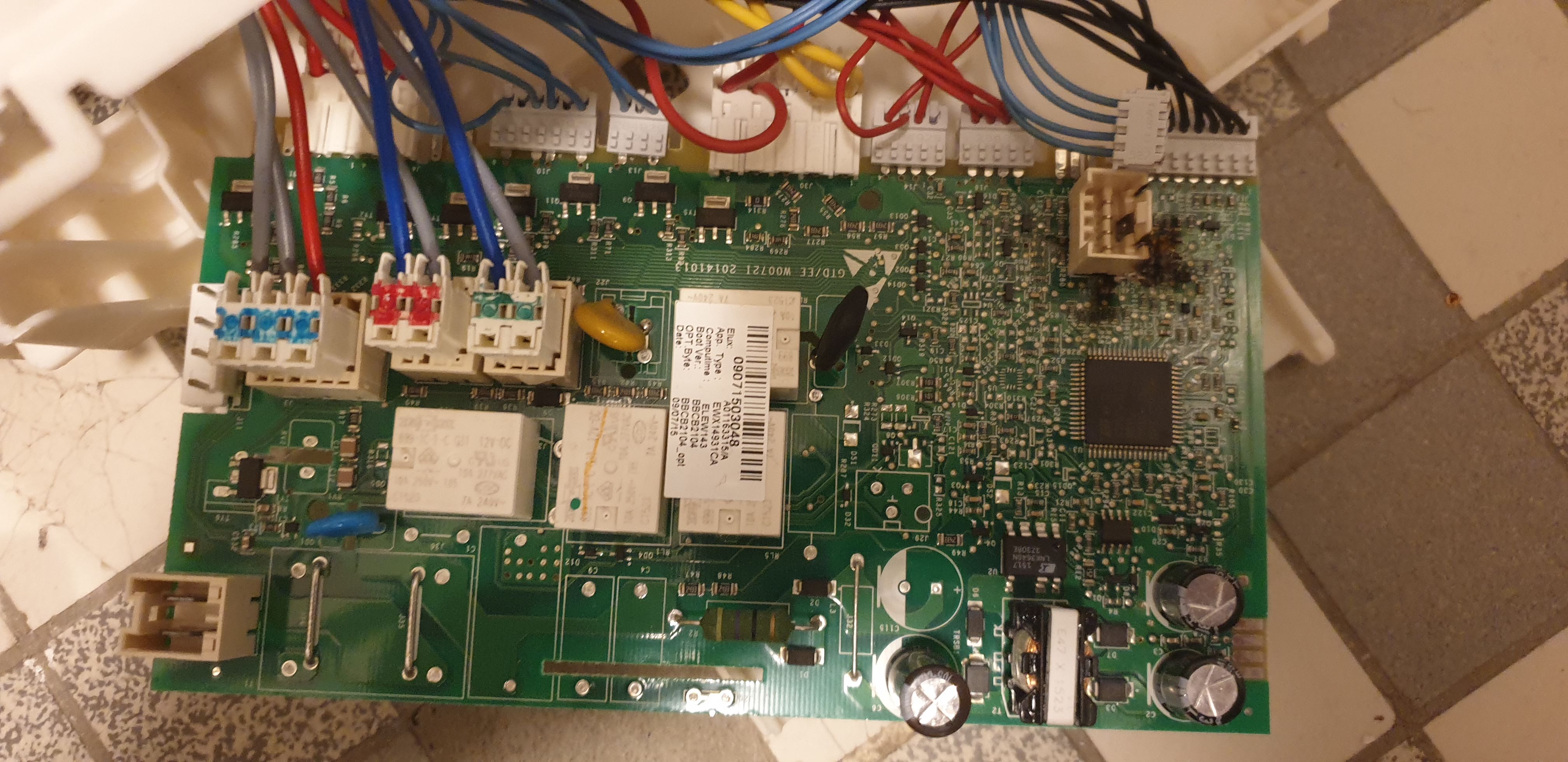 |
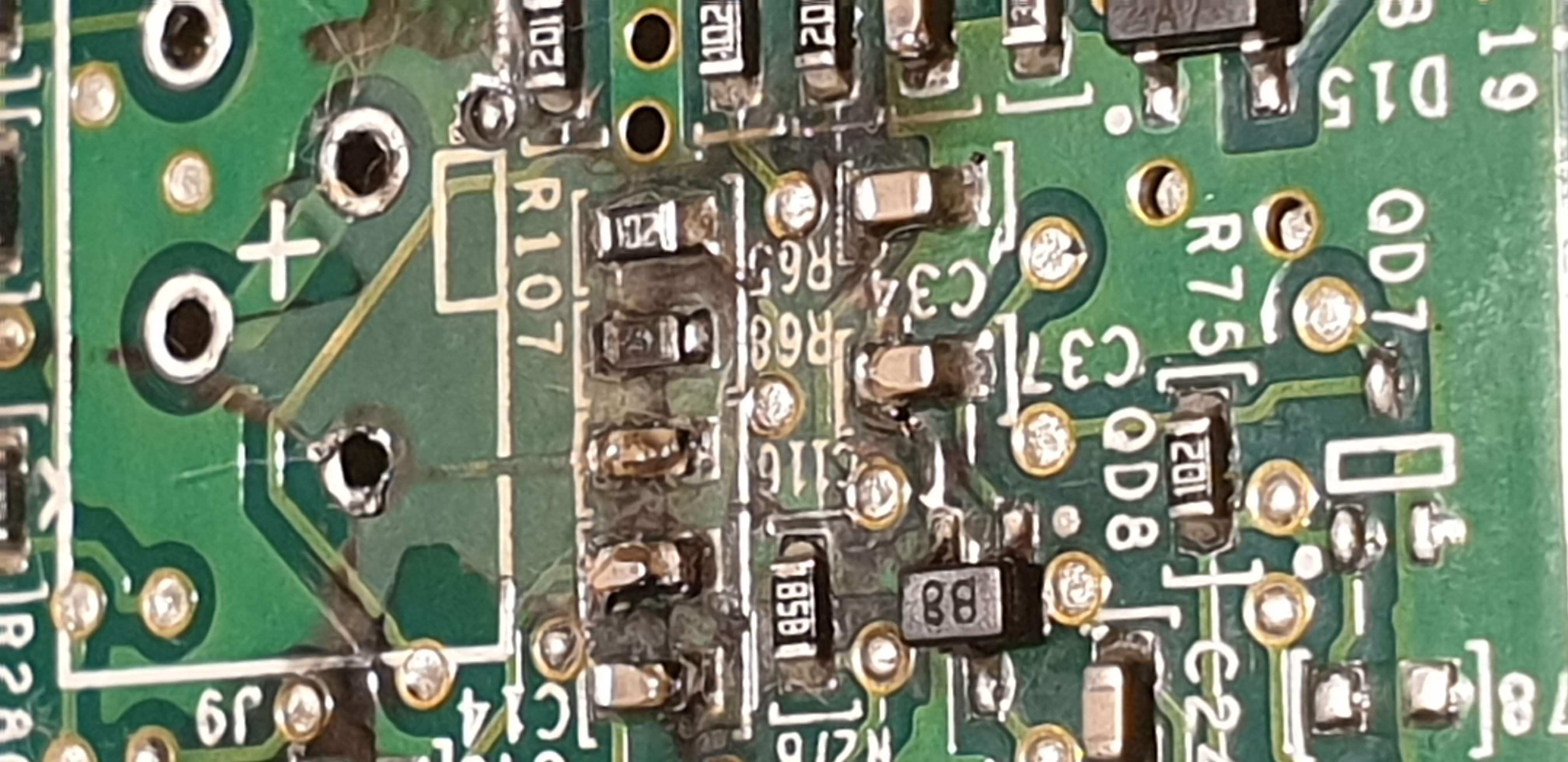 |
Part 2: Replacing the controller
Searching online for the washing machine’s model number, I managed to find this controller, supplied by a company named Ziperone, based in Kiev of all places! This seemed to be the right board and it was cheap enough that it was worth a try, but ostensibly, the board comes “unconfigured”. It fits many models, so it probably needs to be programmed for each model. I couldn’t find any info on how to program the device, so I sent them an email to ask them about it. I waited longer than a whole day for a reply, but they never replied. So I called them instead and they did answer the phone. They guy on the phone assured me that they could program it for me to fit my machine. So, I ordered the control board!
After a couple of weeks, the control board arrived and I installed it. Rather anxiously, I plugged in the machine and pressed the “on” button. It did not turn on. Instead, the control panel just showed 4 red lights. Thinking that there might have been a miscommunication with the Ukrainians, resulting in them not configuring the board correctly or at all 5, I took the board to a local appliance repair shop where they had a USB Dongle and some software to talk with it. They programmed the board for me and I took it back home and tried again. They did charge a small fee for this service but it wasn’t much. This had the same result as before.
Normally, you should be able the get an error code, but if the thing that’s supposed to show the error code doesn’t work, then how do you check what’s wrong? I found out through some sleuthing online that the software they use to program the board also has some diagnostics, so I went back and asked them to plug in the board with the display attached and see if they could get some diagnostics from it. It turned out that the guy didn’t know how to use the diagnostics feature. He tried it and it failed with an error that indicated that it didn’t find the device in its diagnostics database. I think they probably just didn’t have the database installed. The guy gave some bullshit reason that fit his narrative for why it didn’t work.
He said that I would probably have to bring the whole machine to them for the diagnostics to work. I said that if I was going to go through the effort of carrying it down and move it, I might as well get a new one. Also, he was wrong (which I didn’t tell him). There was also the fact that interacting with those guys didn’t exactly inspire confidence in their abilities.
I also tried asking if they had any old display modules from discarded machines that might fit the main control board, so I could test if the display was broken and I didn’t just get a dud from Ziperone. They did not have any of those. It’s weird, but those washing machine repair men didn’t seem to know a lot about washing machines. It seemed like they lacked both curiosity and ambition.
By that point I really wanted to figure this out and I believed that the answer was worth the price of a new display module, which Ziperone did not have but the local repair shop could order for me for 37.000 ISK (around $250 USD). Then I waited for a month. Remember, this was just before X-mas, so this got slowed down by consumerism. You could say that I was stalked by consumerism. I was trying my best to avoid consumerism, but it just followed me.
Part 3: It’s alive!
A few days ago now, the new display module arrived. I tried plugging it in and, to my delight, it lit up and emitted a short little beep when it turned on. Gleefully and anxiously at the same time, I selected a short program and started a cycle.
The machine started pumping out, then letting water in, it turned the motor slightly but then it paused. I.e. the light by the “start” button was blinking like it had been paused. I repeated this experiment a few times with different programmes, but the result was always the same. Curiously, and frustratingly, it did not display an error code.
I searched online for clues, watched YouTube videos and eventually I contacted a few different washing machine repair men with whom I had been in contact before but they were not able to tell me anything useful. Eventually, I managed to get in touch with a guy working for the AEG dealership in Iceland. I described the problem to him and he said that it was probably the motor controller, like most of the other guys (they were all wrong). Then I asked him if there was any way to get the error code, and he said: oh, you just press down the start button and the one next to it. That worked! I don’t know why none of them offered this information before. Maybe I didn’t ask the right questions, maybe they actually didn’t know or maybe they just weren’t interested in helping me out. It was probably a combination of items 1 and 3. I also want to stress that I did search for this information online and I did not find it. In my desperation, I even asked an LLM.
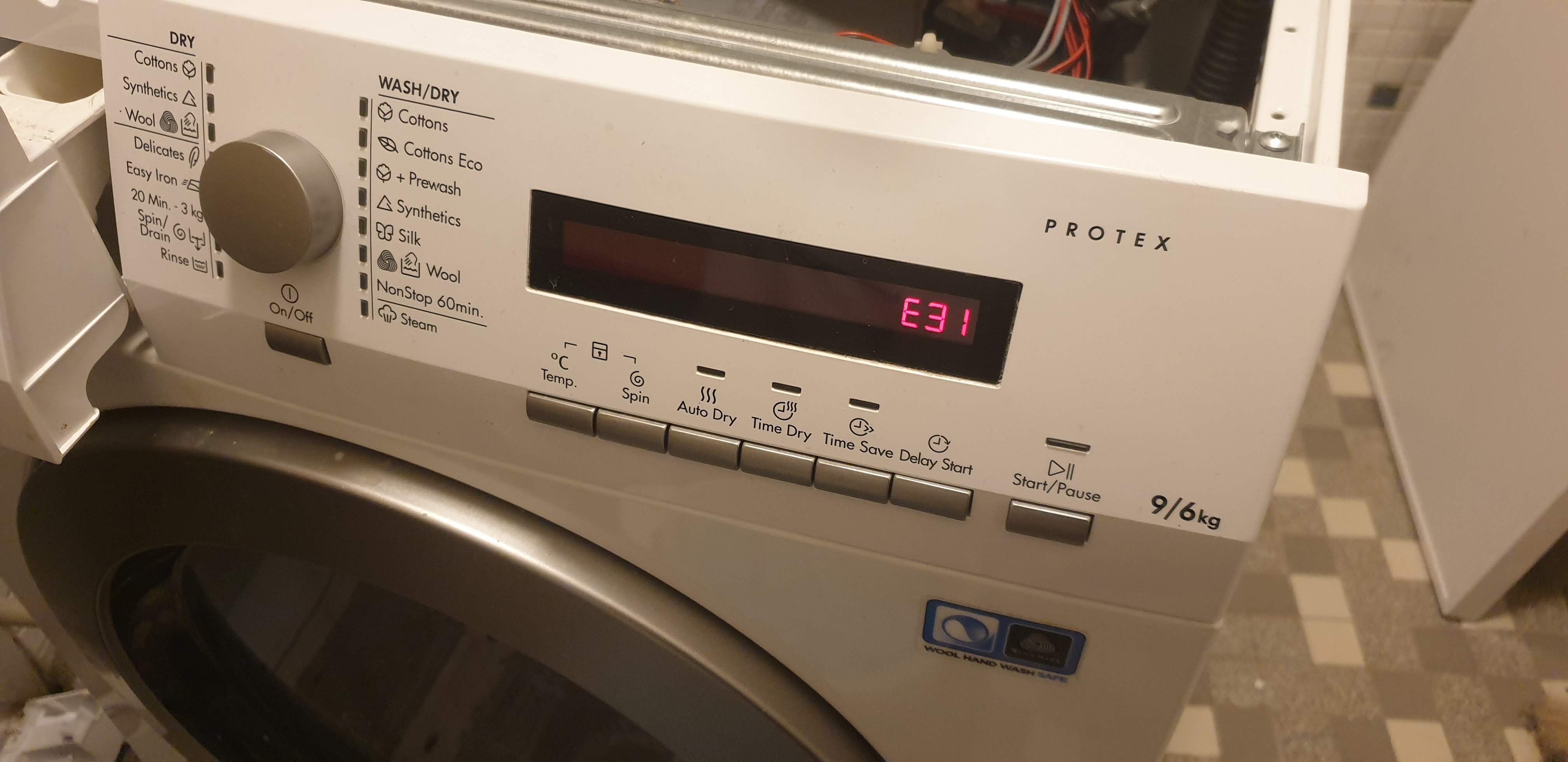
Another fun feature is that if you don’t have an error code, and you do this, you get a light-show on the display panel and when you rotate the knob, the machine cycles through different functions like pumping water, turning the motor, etc. It’s a very useful feature!
Anyhow, the error code was 31. This meant that something was wrong with the water level transducer. Now, because the guys had told me that it was probably the motor controller/inverter, I wanted to check if I could test the transducer somehow. Luckily, Big Clive had the answer! In this video, he takes one apart, tests it and explains how it works. I just needed to plug it to 5V DC and ground and check if I got pulses on the output, so that’s what I did. There were no pulses, so it looked pretty dead. Come to think of it, I could have checked if the motor actually worked using the function testing feature that I described earlier, but I needed a excuse to use the soldering iron and the oscilloscope.
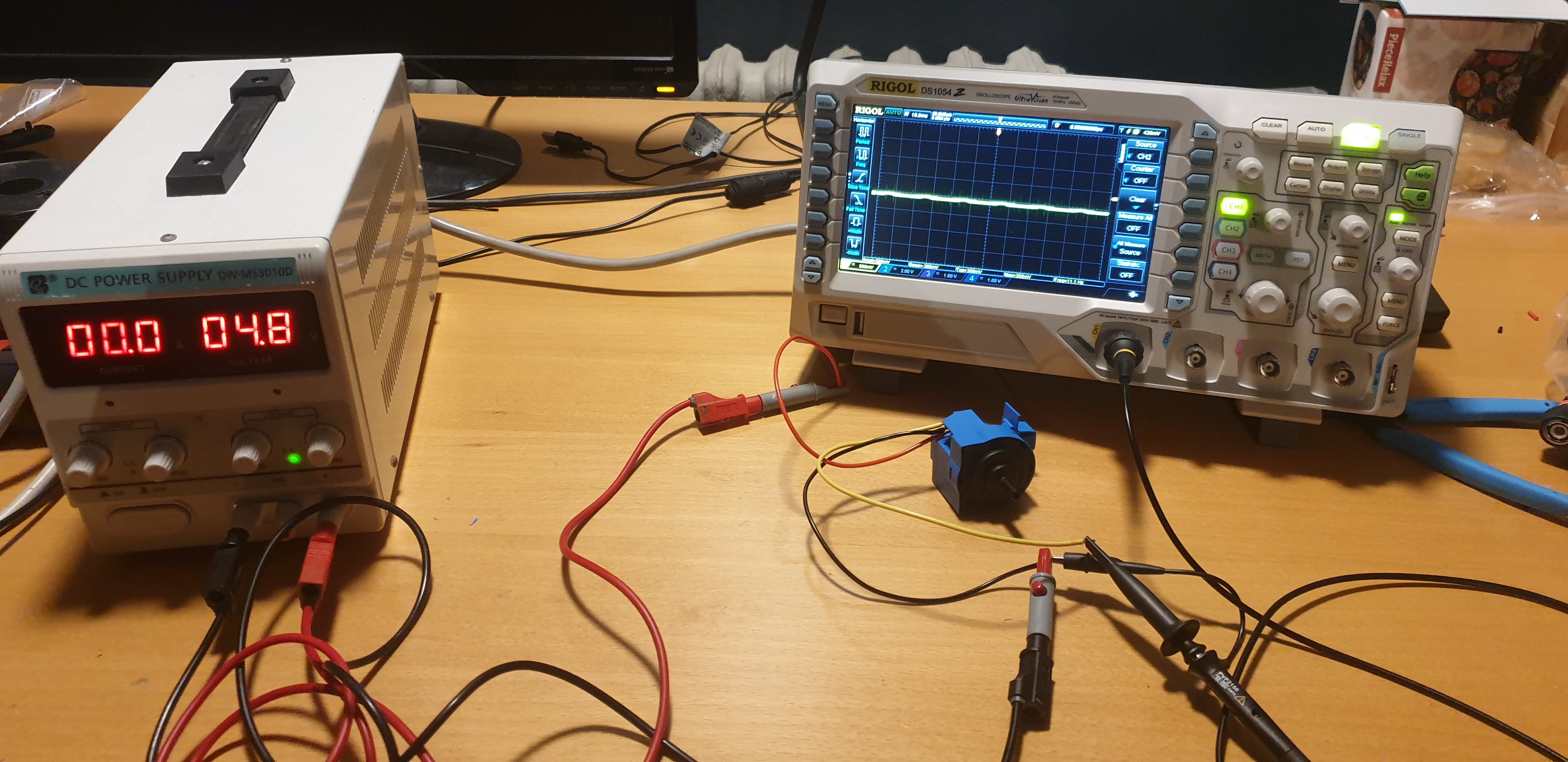
In another stroke of luck, the AEG dealership had the transducer in stock and it wasn’t expensive at all, so I bought it and installed it and now the washing machine works!
Lessons Learned
It’s safe to say that I learned a few things while going through this repair, but not all of the lessons were of a technical nature. Here’s a short summary of a few of those lessons:
- Appliance repair men don’t know Jack Shit.
- It’s really hard to find information online about how to get diagnostics from a washing machine.
- Companies don’t offer any information about how to repair appliances.
- The power supply circuit in my washing machine is really badly designed.
- There is a preferred polarity of European sockets even though the plug can go in either way.
- The water level in a washing machine is measured using pressure.
- Washing machine pressure transducers are pretty neat devices.
-
Okay, mostly to brag. ↩
-
I found out during this endeavour that AEG washing machines are actually just Electrolux machines with AEG written on them instead of Electrolux. ↩
-
Apparently there is a rule in Europe that the neutral wire should always on the left. Had the socket actually been installed correctly, we might have avoided this problem (source).
 ↩
↩ -
I should also really check if my ground fault relay is working correctly. Shouldn’t it act faster than the current breaker? ↩
-
They did not send me any confirmation that they received my special request when I ordered the board. They didn’t even send me tracking info until I called them. They’re not really good with email. ↩